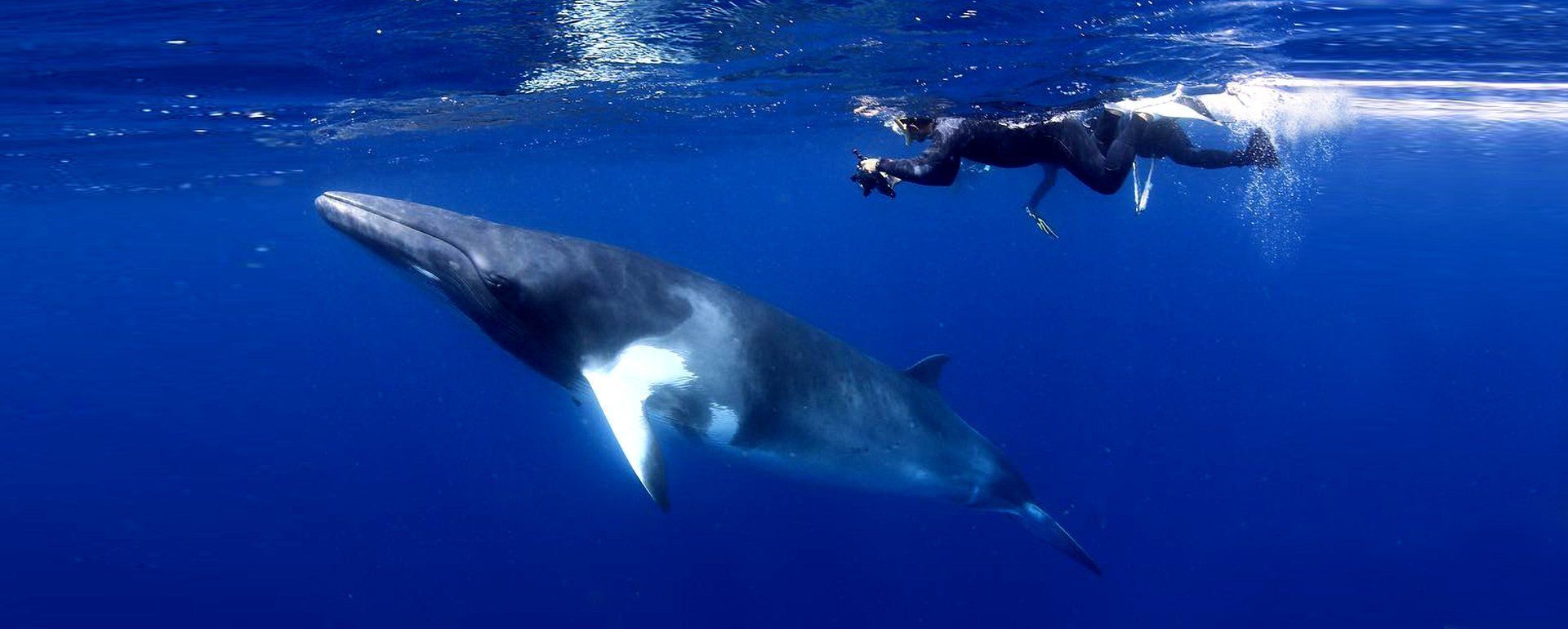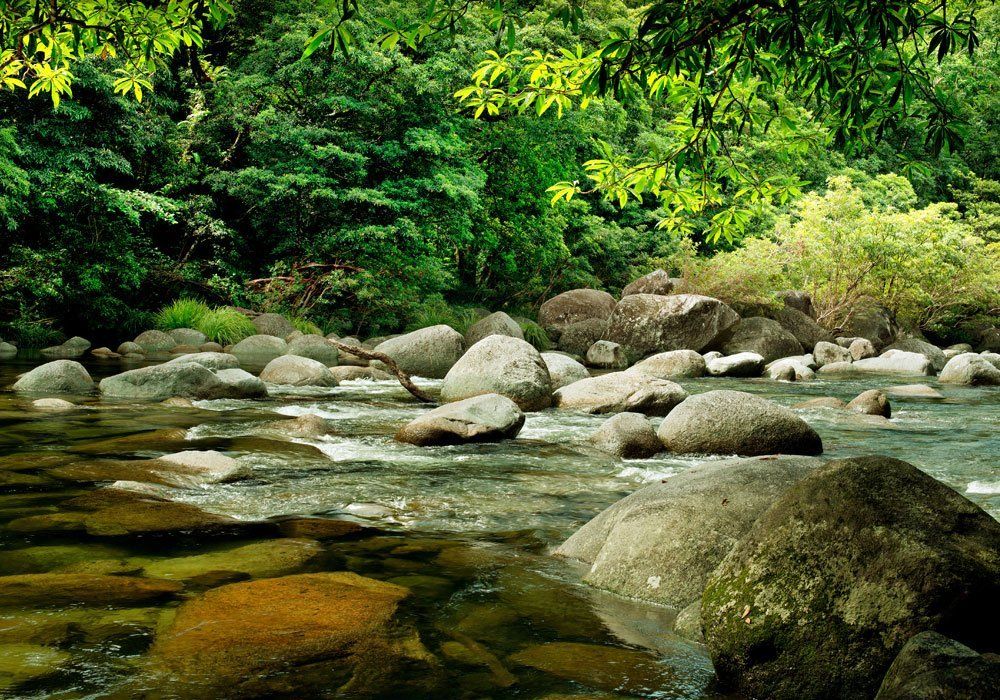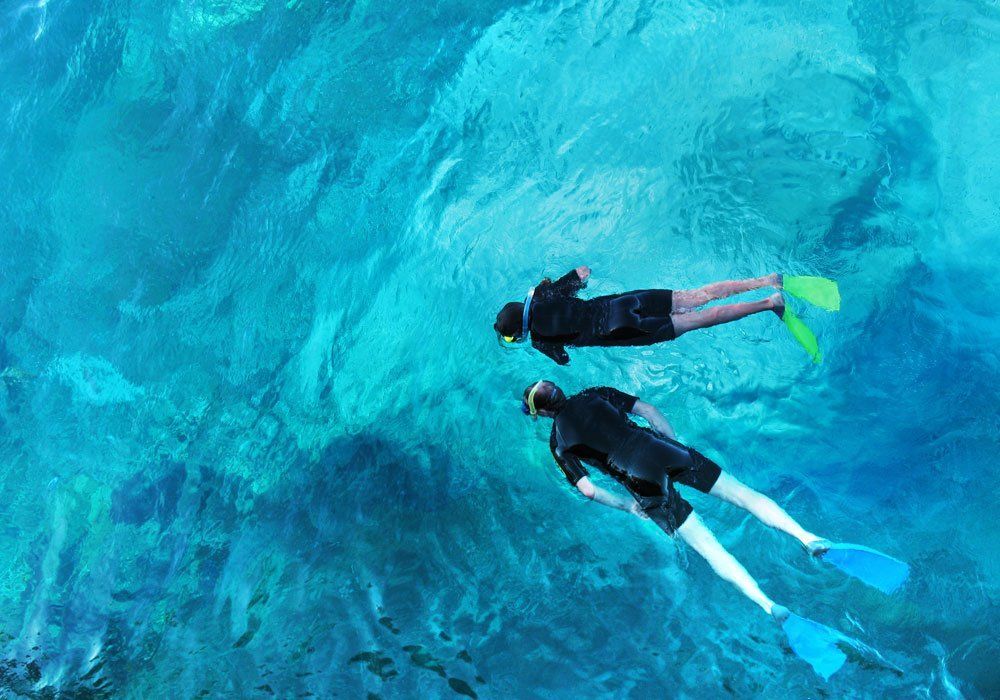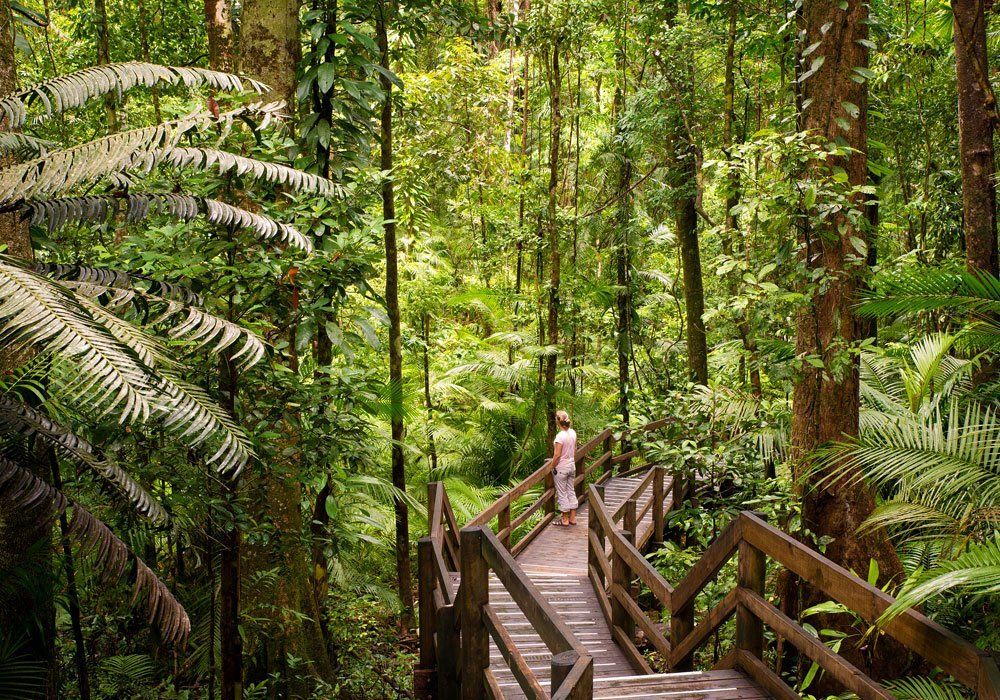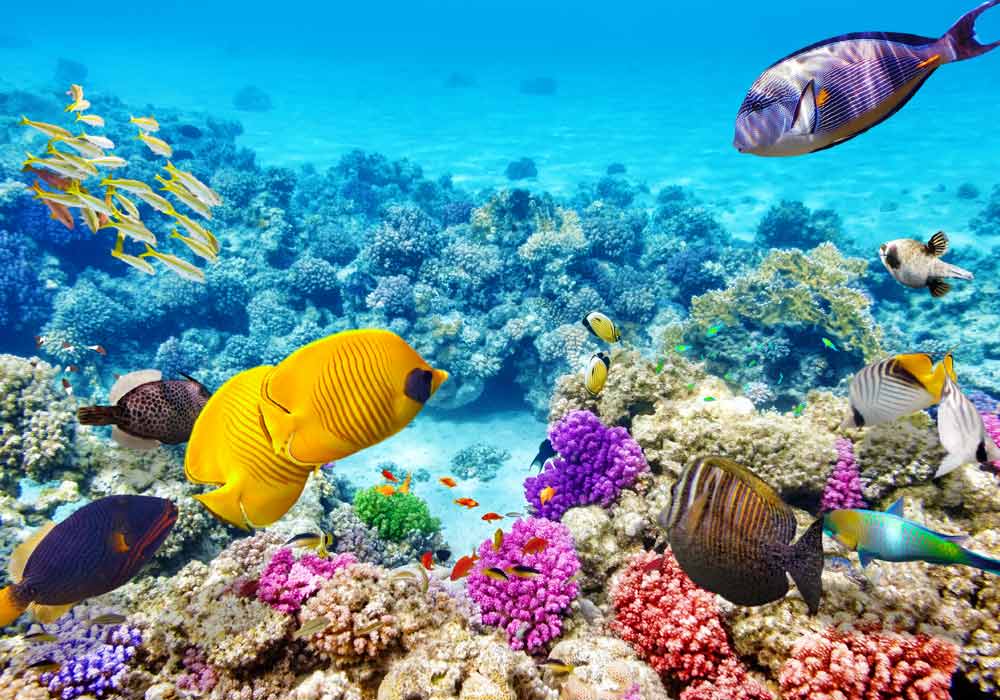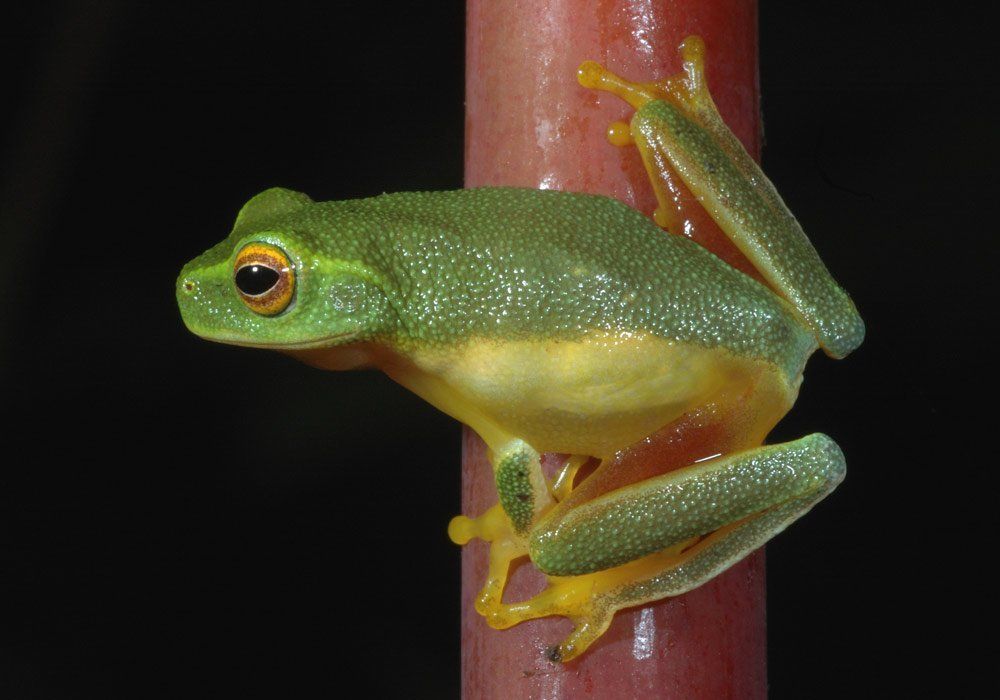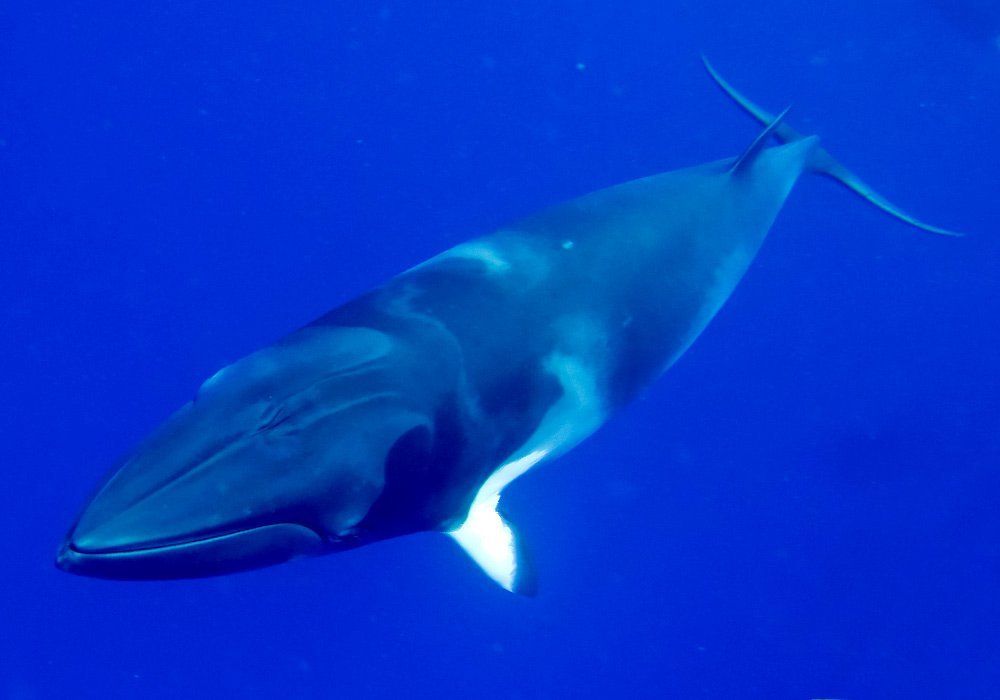Great Barrier Reef
GREAT BARRIER REEF & DAINTREE
RAINFOREST MEETS THE REEF
The tropical rainforest ecosystem of the
Daintree Rainforest is one of the most complex on Earth. Its plant diversity and structural complexity is unrivalled on the Australian continent and represents the origins of other Australian flora.
Millions of years ago, the Australian continent was warm and humid and rainfall was plentiful. During this time rainforest thrived in places such as the Uluru (Ayers Rock) region. As Australia became more arid, there were fewer and fewer places rainforests were able to survive. In the Daintree region, however the climate and topography were ideal, so the area became a last remaining refuge for rainforest. Within this refuge many species were able to live comfortably without reason to change. Their descendants that are still living today retained many of their ancestors' primitive characteristics, some dating back 110 million years.
The Great Barrier Reef is the world's largest coral reef system, composed of over 2,900 individual reefs and 900 islands stretching for over 2,300 kilometres (1,400 mi) over an area of approximately 344,400 square kilometres (133,000 sq mi). The reef is located in the Coral Sea, off the coast of Queensland, Australia.
The Great Barrier Reef can be seen from outer space and is the world's biggest single structure made by living organisms. This reef structure is composed of and built by billions of tiny organisms, known as coral polyps. It supports a wide diversity of life and was selected as a World Heritage Site in 1981. CNN labelled it one of the seven natural wonders of the world. The Queensland National Trust named it a state icon of Queensland.
Both, The Daintree Rainforest and Great Barrier Reef, have been listed as UNESCO World Heritage Sites.
Official Language: English
Capital:
Cairns
Government: Federal Government
Head of State: Prime Minister Malcolm Turnbull
Religion: Christianity, Catholic, Anglican
Currency: Australian Dollar $
Time:
UTC+10
Internet-TLD: .au
Telephone:
+61
Mobile: GSM 900
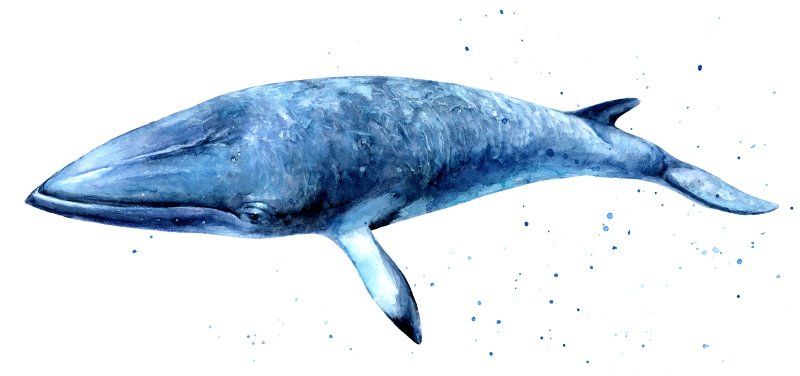
Dietary Requirements
Diversity and abundance make Tropical North Queensland unique as a food-producing region. Some of it is familiar but flag flyers for the tropics include mangoes, bananas and sweet, sun-ripened pineapples, reef fish and wild-caught prawns. Less well-known are the rainforest nuts, fruits and native spices that Aboriginal people gathered from this land for millennia, and today appear in local markets and on restaurant menus.
Other eating establishments proudly showcase their local roots, with native Australian produce like kangaroo, emu and crocodile on the menu and some of the best seafood in the country, caught locally. With a profusion of experiences and produce, whatever your interests and appetite, you’re unlikely to ever go hungry.
Once you start to really explore you’ll discover just how awesome the food on offer is up North. It has a South East Asian influence combined with local bush tucker delicacies, abundant tropical fruit, cheap seafood and native game meat that make for a one of a kind food scene. It’s a melting pot unlike anywhere else on earth.
Ecology
The Daintree Rainforest contains 30% of the frog, reptile and marsupial species in Australia, and 90% of Australia's bat and butterfly species. 7% of bird species in the country can be found in this area. There are also over 12,000 species of insects in the rainforest. All of this diversity is contained within an area that takes up 0.1% of the landmass of Australia.
Where as The Great Barrier Reef supports a diversity of life, including many vulnerable or endangered species, some of which may be endemic to the reef system. Including thirty species of whales, dolphins, porpoises, dwarf minke whales, Indo-Pacific humpback dolphin, and the humpback whale. Large populations of dugongs live there along with 1500 species of fish, 17 species of sea snake, 6 species of turtles and much, much more.
Climate
North Queensland is home to some of the best weather year round that Australia has to offer. Its sunny days, warm waters, cool ocean breezes and generally comfortable climate are part of what make it such a popular holiday destination.
The North Queensland climate is characterised by two distinct seasons, with warm temperatures and a low rainfall during the winter period while summer sees higher rainfall and warmer, balmy temperatures.
The temperatures are recorded as average maximums of (Celsius) 30 degrees and average minimums of (Celsius) 21 degrees. The Tropical North has an average rainfall of 2010mm (an average of 168mm per month).
Visa
Unless you are an Australian or New Zealand citizen, you will need a valid Australian visa to enter the country.
All other passport holders must apply for a visa before leaving home. You can apply for a range of visas, including tourist visas and working holiday visas, at your nearest Australian Embassy or Consulate.
If you are granted a visa, you must obey all Australian laws and all of the conditions attached to the visa while you are in Australia. In particular, you must leave Australia before your visa expires.
Penalties for not obeying Australian laws and visa conditions can include the cancellation of the visa.
GREAT BARRIER REEF
AVAILABLE TOURS
-
NEW TOURS COMING SOON
DISCOVER MORE
Note: $1200 per person non refundable deposit is required at the time of booking.
It's time to start your
unforgettable journey...
unforgettable journey...
It's time to start your unforgettable journey
today...
We hope to create unforgettable
experiences for our guests, sharing the
amazing underwater world.
experiences for our guests, sharing the
amazing underwater world.
We hope to create unforgettable experiences for
our guests, sharing our amazing world. Travel not
to escape life, but for life not to escape you...
USEFUL LINKS
USEFUL LINKS
Airline of choice - Tahiti
SUBSCRIPTION
QUICK SUBSCRIPTION
If you're a fan of ocean and animal documentaries then sign up today and receive our list of must see movies!
© Copyright 2024 Majestic Whale Encounters | Policy Aims and Responsible Travel | Terms and Conditions | Privacy Policy
